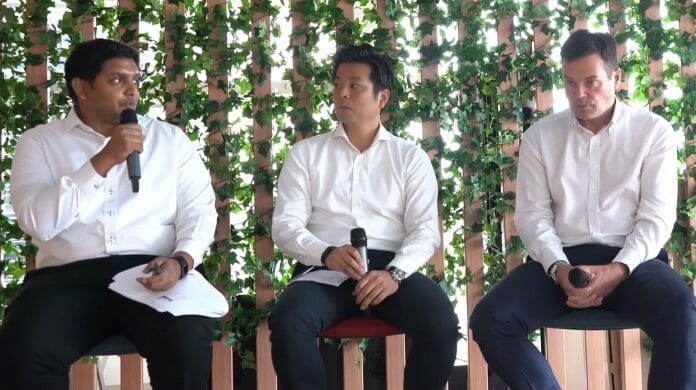Ross McKay, Group Head of Global Shared Services and Finance Process Optimisation at International SOS (right in pic), believes that as companies strive to achieve optimal cost efficiency in their operations, especially in the area of employee travel and expenses (T&E), it is important that they take into account the potential downsides of cutting back too far.
“Executives, managers, and staff haven’t physically seen each other for the last two years, and the longer that that period goes on, the more relationships that were pre-COVID disintegrate. Many staff and organisations have started during COVID or post-COVID and haven’t really met their colleagues, so I think you have to caution against being too aggressive on cutting T&E as a means of saving money, because there are a lot of benefits from the physical interaction that you have,” he stated.
McKay said this during a panel discussion at a recent SAP Concur webinar entitled “Achieve Cost Reduction Targets by Re-imagining Compliance for Employee Discretionary Spend”.
Moderated by Mark Wilfred, Director of Solutions Consulting at SAP Concur (left in pic), the panel also included Munenori Iwanaga, Vice President and Head of Internal Audit at SAP.
At the same time, McKay added, companies needed to tighten their processes when it came to detecting T&E-related fraud or non-compliance.
“There was a situation where people were claiming school fees through expense management process. It’s very cheap to buy a printer to download the school logo from the Internet site and create a fraudulent invoice for a large amount of money, which was then reimbursed to the employee. School fees really shouldn’t be going through an expenses management solution. As well as reducing the risk and improving the process using technology where you can, companies need to start right at the start and review what is going through that process in the first place.”
Wilfred noted that according to a recent report on organisational fraud, most companies or organizations lose about 5% of their revenue each year to fraud.
“The largest proportion of that is asset misappropriation. About 11% of asset misappropriation are T&E related, and most of those are caused by lack of internal controls. In the past, it took 24 months to identify a fraud scheme, and now it’s about 18 months. On average, each fraud scheme is costing an organization $40K when it used to be $33k, so people who are trying to take advantage of these schemes are becoming more sophisticated,” he highlighted.
“Technology alone doesn’t solve the problems, we’ve got to start with people, process, and balancing the people and process part to make sure that people can do their jobs while still making sure the controls are strong; only then can technology come into play.”
Meanwhile, Iwanaga noted that at SAP, while the policy was generally to provide for employee empowerment instead of micromanaging employees for every single expense report, the challenge remained to ensure the right balance between employee empowerment and trust versus the need to manage and micromanage through certain tools and resources such as SAP Concur.
“We use Concur because it is an automated solution and you can pre-configure it based on monetary thresholds or depending on the expense type; for example, international travel is almost 100% audited versus domestic travel and entertainment, where maybe there is almost no audit.
“There are also a lot of analytics that we can run to check on duplicate claims or if there are any anomalies going over certain thresholds. We don’t do a lot of controls on the front end, so employees feel empowered and the businesses can run agile, but at the same time from a third-line perspective if we need to really do a drill-down into certain expense behaviours, spend patterns etc., then the tool allows us to go in and do a real deep-dive.”
SAP Concur is able to capture all employee discretionary spend on a single platform, and automate the review of 100% of the transactions using the Detect solution, whether companies have the resources internally or decide to outsource that function.
The platform can help businesses increase their savings, reduce the overall organisational risk, improve employee behavior because there’s constant feedback and there’s the ability to email and discuss things with employees, and streamline the T&E claims process.
“We wanted to make it as easy as possible for the employees, and that’s where ExpenseIt helps because it captures the information for you automatically at the line level on your mobile, and you can submit everything on your mobile. That then goes through the audit process, and if you’re using Detect, you can have pre- or post-payment analytics to look at and support your team,” Wilfred said.
An online version of the webinar can be viewed here.









